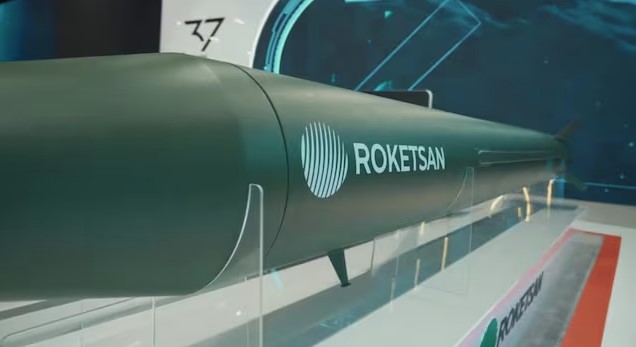Turkey formally unveiled the Tayfun Block-4, its first hypersonic ballistic missile, at the International Defense Industry Fair (IDEF) 2025 in Istanbul. This missile marks a major step forward in the country’s growing defense capabilities.
Turkey Unveils Tayfun Block-4 at IDEF 2025
Developed by Roketsan, one of Turkey’s leading defense companies, the Tayfun Block-4 is an upgraded, faster, and more advanced version of the original Tayfun missile. It is Turkey’s longest-range indigenous ballistic missile and now enters the rare category of hypersonic weapon systems.
Measuring 6.5 meters in length and weighing approximately 2,300 kilograms, the Tayfun Block-4 is built to strike targets up to 800 kilometers away. According to the Turkish media outlet Turkey Today, this missile marks a new milestone for the country’s defense sector.
Roketsan confirmed that the missile features a multi-purpose warhead, which means it can hit various types of military targets. This includes air defense systems, control centers, military storage sites, and other strategic locations from a very long distance. The company stated that the Tayfun Block-4 has set a new range record for Turkey’s missile programs and weighs more than 7 tons, showing how powerful and heavy-duty it is.
The unveiling of this missile comes at a time when Turkey is strengthening its role in regional defense, particularly through joint military projects and partnerships.
What Makes Hypersonic Missiles So Different?
Hypersonic missiles are not like traditional missiles. An object is said to be “hypersonic” if it can go faster than Mach 5, or five times the speed of sound. To put that in perspective, that’s around 6,100 kilometers per hour, or 3,800 miles per hour. Such high speed allows the missile to reach distant targets in just a few minutes.
What makes hypersonic missiles especially difficult to stop is their ability to move and change direction mid-flight, all while staying within the Earth’s atmosphere. This is unlike traditional ballistic missiles, which usually follow a fixed path once launched. Because of their speed and maneuverability, hypersonic missiles are hard to detect and even harder to intercept.
Although most ballistic missiles also reach hypersonic speeds during their descent phase, the Tayfun Block-4 maintains such speeds during more of its flight path, which makes it harder for enemy defense systems to respond in time. It gives the launching country a strategic advantage during military operations.
Turkey has made significant advancements in modern defense technology by being one of the few nations with operational hypersonic weapons. This adds to its list of defense achievements, which already include long-range drones, advanced tanks, and modern naval assets.
Turkey-Pakistan Defence Ties and the Role of Tayfun Block-4
The launch of Tayfun Block-4 also highlights Turkey’s increasing cooperation with other countries in the defense sector, especially with Pakistan. Over the past few years, Turkey and Pakistan have built strong military, economic, and cultural partnerships.
During recent tensions between India and Pakistan, there were reports that Turkish-made drones, including the Bayraktar TB2, were used in the conflict. Although both Turkey and Pakistan have not officially confirmed the transfer of these systems, military sources have indicated the involvement of Turkish defense equipment during operations near the India-Pakistan border.
Geopolitical Rift: Turkey’s F-35 Setback Deepens NATO Divide Amid Israel-U.S. Defense Priorities
Apart from drones, Turkey has also provided naval equipment and training support to Pakistan. The two countries have signed multiple defense cooperation agreements, which include sharing technology, joint training exercises, and even potential co-production of defense items.
Earlier this year, high-level officials from both countries held discussions to deepen their cooperation across several sectors including defense, economy, culture, and education. These talks reflect a stronger commitment between the two countries to work together on security and defense.
The introduction of the Tayfun Block-4 missile, therefore, not only enhances Turkey’s own military strength but also signals how its defense capabilities could influence partnerships and strategies in the region. As Turkey continues to grow its defense industry, countries like Pakistan are turning to Ankara for modern, high-performance weapon systems.

